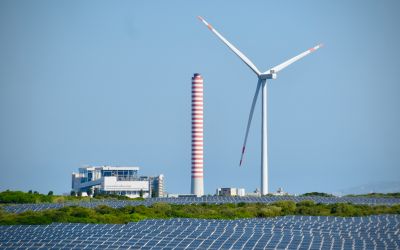ICT’s smart answer to climate change
Earlier this month the Global eSustainability Initiative (GESI) and the non-profit organisation Climate Group published a report entitled 'SMART 2020: Enabling the low carbon economy in the information age'.
Earlier this month the Global eSustainability Initiative (GESI) and the non-profit organisation Climate Group published a report entitled 'SMART 2020: Enabling the low carbon economy in the information age'.
Presenting results from an analysis of the direct carbon footprint of the ICT sector, the report examines global emission reduction opportunities and strategies to overcome barriers hindering the full realisation of such.
The report concludes that the ICT sector plays a key role in creating a low carbon society globally, but relies on other sectors and the government for collaboration.
Based on analysis supported by McKinsey & Company, the report estimates a significant growth of the sector's emissions over the coming years from 0.83 billion tonnes CO2-e today to 1.43 billion tonnes CO2-e in 2020 under a business as usual scenario.
With more and more people entering the digital age, the most significant growth is seen in developing countries, which will account for 60% of ICT's carbon emissions by 2020.
By that time 70% of China's population will be able to afford ICT devices and in just 12 year's time 50% of all households will be connected by broadband.It's not all bad news.
As analyses have shown the sector can not only improve its own efficiency but also largely influence energy consumption and emissions across other sectors. The 'enabling effects' of ICTs could contribute to emission reductions of 7.8 billion tonnes by 2020 – emissions 5 times larger than those from the sector itself.
To a certain extent this is enabled by commonly known technologies making life more virtual such as video-conferencing, tele-working, online shopping or e-billing that can lead to reduced transportation emissions or paper consumption.
The substitution of high carbon products and activities with such low carbon alternatives– also referred to as dematerialisation- could reduce emissions by 500 Mt CO2-e by 2020, which is just less than Australia's total emissions in 2005.
The linchpin, however, is optimising systems and processes through the introduction of technology capabilities integral to energy efficiency.
The smart opportunity represented by ICT applications is to make energy consumption and greenhouse gas emissions visible and thus manageable across various sectors.
In the most energy consuming sectors, i.e. industry, power, transport and buildings, ICT can for example contribute to optimisation through software and hardware that enable improved designs of transport networks, simulation of manufacturing processes, energy modelling from design through building use, or real time demand side management (DSM) in electricity grids.
These solutions allow drastic emissions reductions and improved energy efficiency, as well as economic benefits in the form of potential global savings of EUR 600 billion ($946.5 billion).
While the report presents numerous ICT applications that allow detection of inefficiencies and optimisation of processes, systems and capabilities accordingly, it also highlights the importance of integral process-wide improvements that have a much greater effect than isolated efficiency gains.
For the full story please click here






